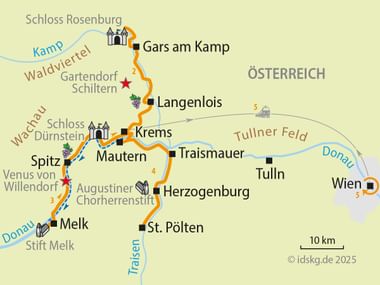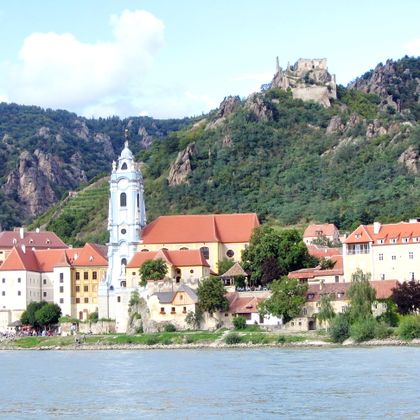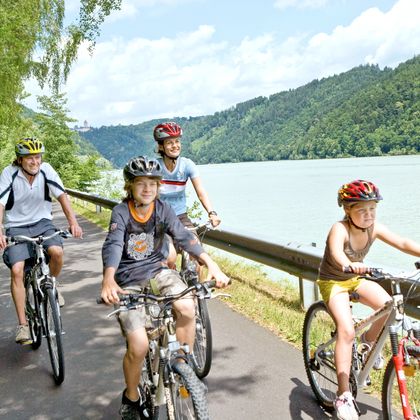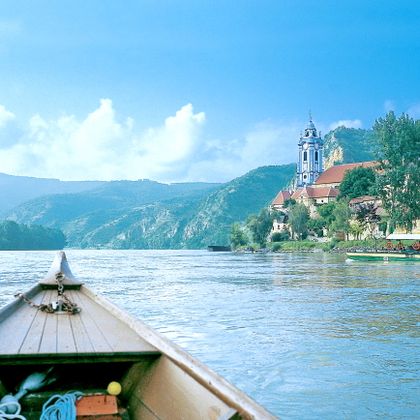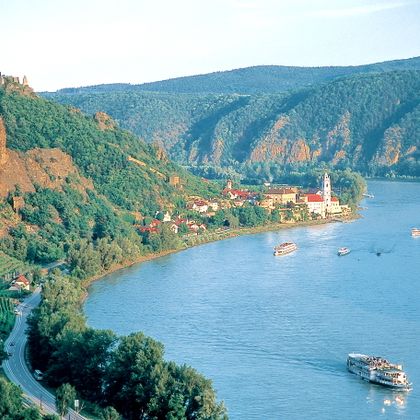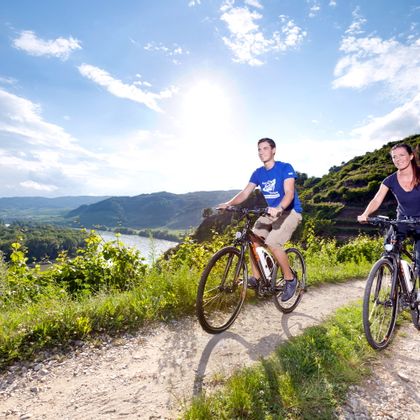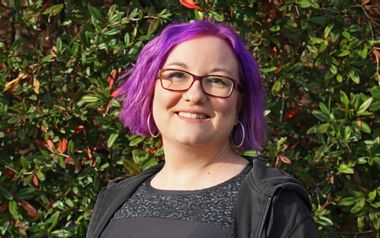Below please find more information about the Wachau radial tour. If you have any further questions please feel free to contact us by phone: 0049 - (0)6421-886890.
Arrival by train
Krems is easily accessible from all major cities in Germany by train. Current schedule information and price information can be found at: www.bahn.de.
Parking facilities at the hotel
The Steigenberger Hotel & Spa (Cat. Premium) offers a hotel garage. The cost per day and parking space about €15.00. Costs payable locally. Reservation is not possible. Gästehaus Nikolaihof (Cat. Comfort) offers free parking for the duration of the trip.
Condition of cycle paths
The routes run on a completely developed, flat bike path directly along the banks of the Danube. Also very suitable for cycling beginners and children. The Kamptal bike path has slight gradients and is not paved throughout. Partly expect gravel and forest trails. At the Göttweig Rundtour a steep climb to the monastery is to be mastered.
Available rental bikes
You can choose from unisex bikes with 30-speed derailleur gears and freewheel as well as electric bikes. All hire bikes are equipped with a pannier bag and an odometer (except electric bikes). Simply state your bike preference when booking.
Cycling in Austria
For children up to 12 years helmet is mandatory in Austria. A helmet can be bought for € 44.00 payable in advance, must be announced when booking.
Helmets worldwide
Route suggestions
Donau Cycle Path to Tulln approx. 48 km + train ride
Look forward to this centerpiece of the classic Danube Cycle Path, which you should definitely not miss. Especially not with the flower city of Tulln as a highlight. On the way, take a break in the historic town of Traismauer. Marvel at stone testimonies of 2000 years of history during a tour of the town. The Roman Gate, the Hunger Tower and the remains of the city wall as well as excavations in the lower church bear witness to the role of the Roman small fort Augustianis in the defense of the Danube Limes. In Tulln, a visit to the extraordinary garden fair "Die Garten Tulln" (early April to early October) is worthwhile. The strictly ecological care of the site has become an example for many other similar garden shows at home and abroad.
Old Town Stroll in Krems
Today is completely dedicated to the city Krems. After the included wine tasting at the winegrowers Krems (Sandgrube 13), you should take a stroll through the city. The old town of Krems belongs to the UNESCO World Heritage Site Cultural Landscape Wachau, which was recognized in the year 2000. The landmark of the city of Krems is the Steiner Tor, a preserved city gate which was extensively restored in 2005. Both in the district of Krems and the district of Stein the old town area is absolutely worth seeing. From the Danube, stroll through the town square past the John of Nepomuk Monument and the Baroque town hall Steiner Landstrasse, past the Kunsthalle Krems and the Caricature Museum until Steiner Tor. This only surviving of the four gates of Krems is decorated with inscriptions and coats of arms. Here, the old town of Krems begins with the Upper and Lower Country Road that is the main axis of the city since the Middle Ages. Your short tour will take you to Gozzoburg, the churches and the town hall from the 16th century, to Göglhaus the daily market, the Simandlbrunnen, where every year in June there is a wine festival, and the Dominican Church. In the pedestrian area you can buy Austrian souvenirs for your loved one. Who does not want to renounce the physical activity even today, can additionally take a little vineyard hike.
Traisental Cycle Path Herzogenburg - Göttweig Abbey approx. 52 km
You cycle along the Traisental Cycle Path through a cultural landscape steeped in history, which has been shaped by the influence of important monasteries. Together with Melk Abbey, they bear witness to the religious and economic significance of this region. Your first stop is the magnificent Herzogenburg Abbey, an impressive Augustinian monastery with a rich history. Your route continues through rolling vineyards, flowering fields, and shady forest passages up to the venerable Göttweig Abbey (short, steep climb). Founded in 1083 and a UNESCO World Heritage Site since 2001, it is considered one of the most important Benedictine monasteries in Austria. From the summit of the Göttweiger Berg, you will have a magnificent view over the Danube-Krems Valley – an unforgettable highlight of your tour.
Extra costs which are not included in the price
Any tourist tax and charging fees for bicycle batteries are not included in the tour price and must therefore be paid at the hotel.
Train journeys from Tulln to Krems / Mautern, from Krems / Mautern to St. Pölten, and from Krems / Mautern to Vienna are not included.
7 day hotline service
Just in case the bike chain breaks, flooding makes it impossible to continue your tour or any other nasty surprise: You can reach us seven days a week and we will do anything to help you as fast as possible.
Passport and visa requirements
For EU citizens, there are no special passport or visa requirements and no health formalities to be considered for this trip.
Travel insurance
The tour price already includes the statutory insolvency insurance. In addition, we recommend that you take out travel cancellation insurance upon receipt of your travel confirmation in order to protect yourself against financial disadvantages in the event of travel cancellation, interruption of travel, illness or accident.





